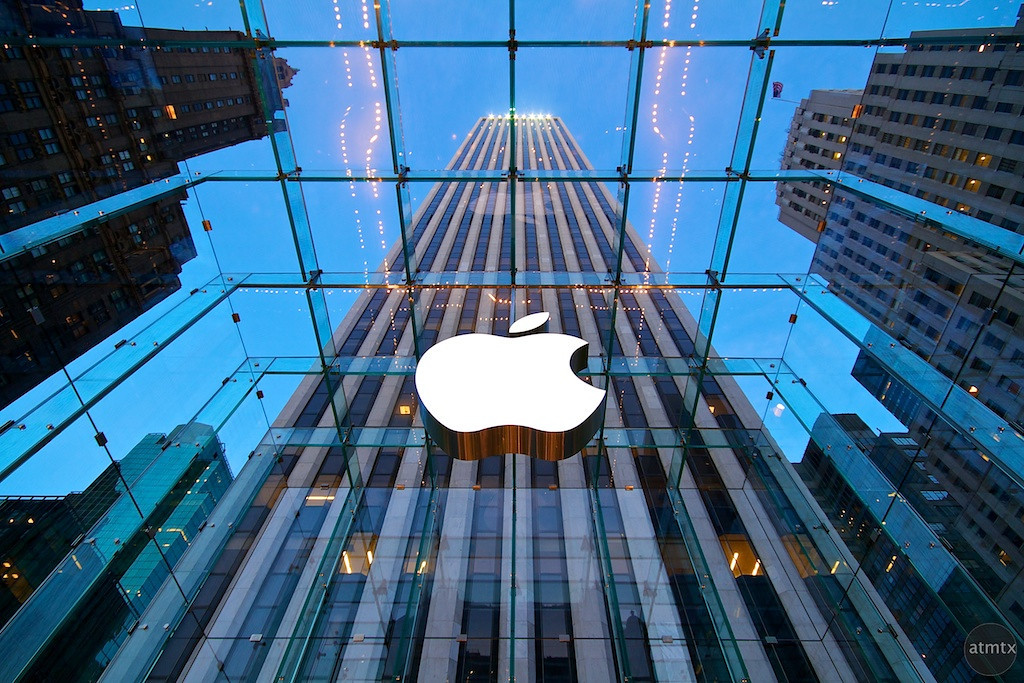SinoTech: Trade Wars, AI Valuations, and Telecom Restrictions
Tech Trade Spat Cools Off Slightly … For Now
Published by The Lawfare Institute
in Cooperation With

Tech Trade Spat Cools Off Slightly … For Now
Tensions over China’s technology trade policies appeared to cool off last week after President Xi Jinping promised thorough economic liberalization in a speech at the annual Boao Forum for Asia, a China-led conference promoted by state media and others as the “Asian Davos.” These concessions remain far from U.S. demands, however, and the Trump administration is reportedly planning to reignite the dispute by initiating $100 billion in new tariffs and establishing restrictions on Chinese investment in U.S. tech. Any new U.S. trade barriers are likely to be met by quick countermeasures from the Chinese government.
President Xi’s April 9 speech outlined four specific measures that the Chinese government would adopt within the year:
- Expand foreign access to Chinese markets by liberalizing restrictions on foreign investment, including increased access to the financial sector;
- Create a more attractive market for foreign investment by strengthening compliance with international trade rules, increasing transparency, and upholding rule according to law;
- Strengthen intellectual property protections, including by reinstituting the State Intellectual Property Office and augmenting enforcement;
- Increase imports by lowering import tariffs, particularly for automobiles.
Many of Xi’s promises had already been outlined in a series of recent pledges to liberalize China’s economy, most of which have not come to fruition, leading some to express understandable skepticism about Xi’s level of commitment. At a session the next day, however, People’s Bank of China Governor Yi Gang laid out an unusually concrete reform agenda, promising to remove foreign ownership caps in banks and asset management companies and to allow majority foreign shareholding for other select financial institutions within the next few months, with vaguer reforms promised by the end of the year. On Tuesday, an official from China’s National Development and Reform Commission announced that foreign ownership caps for electric vehicle and truck manufacturers would also be removed this year.
Xi’s speech came after a week of high-profile posturing, although none of that posturing is likely to result in concrete action before late May. On April 3, the U.S. trade representative, Robert Lighthizer, proposed 25 percent tariffs on $50 billion in Chinese electronic, chemical, and industrial goods under Section 301 of the Trade Act of 1974. Less than 24 hours later, China’s Ministry of Commerce announced its own $50 billion in prospective tariffs, focusing on soybeans, pork, cars, and other products economically important to states that Trump won in 2016. On April 5, President Trump directed the trade representative to consider levying a second wave of tariffs against an additional $100 billion in Chinese goods, again under Section 301.
Neither side has taken major action since Xi’s speech, though the Commerce Ministry announced it would place a temporary 179 percent surcharge on all $1 billion in U.S. sorghum imports after a preliminary investigation concluded that subsidized American harvests were depressing domestic production. That relative calm may end soon, however, as the Trump administration is reportedly planning to propose the second wave of tariffs as early as this week, and may initiate a new Section 301 complaint against China’s cloud-computing restrictions. The White House is also reportedly considering imposing new restrictions on Chinese investment in U.S. tech companies under the International Emergency Economic Powers Act, though those restrictions are not expected to be announced until early June. The administration seems determined to consolidate its arsenal of trade weapons that could be launched against China, and even appeared (at least briefly) to consider rejoining the Trans-Pacific Partnership, the multilateral Asian trade pact that President Trump railed against on the campaign trail. But the U.S. government’s path forward may also be complicated by disagreement within the executive branch, where President Trump’s advisors are reportedly sparring over the proper means to combat China’s trade policy. Treasury Secretary Steven Mnuchin and Commerce Secretary Wilbur Ross are reportedly willing to accept quick concessions that would even the United States’ trade deficit with China, whereas Trade Representative Robert Lighthizer and National Trade Council Director Peter Navarro are encouraging the President to hold out for deeper reforms.
Chinese officials have promised to retaliate against any new U.S. action, and Beijing certainly possess its own range of trade tools if the spat should escalate. Although the Chinese government will soon run out of U.S. imports to tax, it could increase cyber-enabled theft, make life difficult for U.S. firms operating in China, sell off U.S. treasury bonds, or even depreciate the yuan. The Commerce Ministry has already begun to drag its feet on approving U.S. tech acquisitions, including American chipmaker Qualcomm’s takeover of Dutch competitor NXP. China has also attempted to enlist the international community, particularly the European Union, against America’s unilateral trade moves. Both the European Union and Japan have requested to join the U.S.-initiated consultation on China’s intellectual property regime. Without any official talks scheduled, progress will have to come through behind-the-scenes negotiations, which reportedly hit a wall last week after disagreements on China’s subsidies for industries favored under its “Made in China 2025” industrial plan.
SenseTime becomes the world’s most valuable AI startup
On April 9, Chinese artificial intelligence startup SenseTime announced that it had raised $600 million in Series C investment funding, indicating a valuation of more than $3 billion and making SenseTime the world’s most valuable startup of its kind. The funding round was led by Chinese e-commerce titan Alibaba, which joins U.S. chipmaker Qualcomm among the firm’s primary investors. SenseTime reportedly serves more than 400 customers across various industries, including Honda, Huawei, and Weibo.
Sensetime specializes in image recognition, particularly the type of face, movement, and object recognition that Chinese law enforcement agencies and local police departments are increasingly adopting. SenseTime’s official website showcases the application of its intelligence surveillance system in Guangzhou and Yunnan, where provincial police forces have adopted facial recognition to identify criminal suspects from surveillance tapes. In Guangzhou, the video detection system is said to have “identified more than 2000 suspects … captured more than 800 people and successfully solved nearly 100 cases” in the last year alone.
Chinese authorities have rapidly expanded the use of facial recognition technologies over the past year, where it has been used to catch jaywalkers and has been embedded in glasses and monitors. On April 12, facial recognition technology allowed police in Nanchang to identify and catch a single fugitive at a pop concert among a crowd of about 50,000. The technology may now be headed overseas; Zimbabwe has agreed to begin importing facial recognition technology from China through the Belt and Road initiative.
China has made a strong push to develop its domestic artificial intelligence industry, focusing in recent weeks on human capital development. On April 3, China’s Ministry of Education announced an action plan for promoting artificial intelligence in universities through increased fundamental research, enhanced training of artificial intelligence talent, and additional demonstrations of AI’s capabilities in areas like education, manufacturing, and medicine. On April 4, the Chinese Ministry of Education pledged to train at least 5,000 students and 500 teachers about artificial intelligence within the next five years. Other recent efforts include a plan to build a $2.1 billion artificial intelligence technology park in western Beijing and a new annual training program on AI research launched by former Google executive Kai-Fu Lee and supported by the Education Ministry.
Commerce and FCC Further Restrict Chinese Telecoms
Federal agencies have continued to quietly restrict the access afforded to Chinese telecoms, blurring the line between national security concerns and economic protectionism. On Monday, April 16, the Commerce Department banned American companies from selling products to ZTE, China’s second largest telecom equipment maker, for seven years after concluding that ZTE had failed to fully enforce a 2017 settlement of criminal and civil charges. The settlement held ZTE responsible for shipping equipment to Iran and North Korea in violation of U.S. sanctions, but the Commerce Department found that ZTE had not, as promised, punished the executives involved. The United Kingdom’s National Cyber Security Centre also warned British telecom industries not to use any equipment or service provided by ZTE out of national security concerns, citing ZTE’s violation of the settlement as a contributing reason.
On Tuesday, the Federal Communications Commission unanimously approved a Notice of Proposed Rulemaking that would prohibit rural telecom providers from using money from the Universal Service Fund to purchase equipment from companies that pose a national security threat. The proposed rule has been widely recognized as an attempt to block ZTE and Huawei, China’s largest telecom equipment maker, from installing their equipment in American infrastructure. Huawei, which has been repeatedly targeted by American lawmakers and federal agencies, appears to be shifting its focus away from the U.S. market.
In Other News
- Chinese media administrators tightened up restrictions on “ethically inappropriate” internet content on April 4, removing Toutiao, one of China’s most popular news platforms, and three other news portals from smartphone app stores. Toutiao was also ordered to shut down content-creators deemed vulgar by regulators. On April 4, microblogging leader Weibo announced that it would prohibit LGBTQ and violent content in order to comply with the state restrictions. After publish backlash, Weibo walked back the ban.
- Both the Chinese and American delegations submitted working papers to last week’s meeting of U.N. Group of Governmental Experts on lethal autonomous weapons systems. China called for “a succinct protocol to ban the use of fully autonomous weapons systems" and suggested the need for closer examination of the weapons’ capabilities and potential effects. The United States rejected calls for an outright ban, citing AI’s potential to reduce civilian suffering and improve compliance with international humanitarian law.
- A joint project of two Chinese shipping firms and an autonomous car startup completed a test drive of a driverless electric truck, allegedly the world’s first, in Tianjin on April 12. The test reflects heated competition among China’s self-driving startups to commercialize the technology; TuSimple plans to launch an autonomous port staffed with self-driving trucks later this year, and Westwell recently introduced an AI-embedded self-driving container truck to Zhuhai port. In a press conference earlier this February, Transportation Minister Li Xiaopeng pledged to build more test centers and regulatory guidelines for self-driving technology.
- Local police in Qingdao ordered stores that provide WiFi to consumers to replace their routers with government-verified models made by BHU, a company that reportedly used to boast on its website of a “long-term relationship” with the Public Safety Ministry and local police.
- The inaugural China Digital Summit is scheduled to begin on Sunday in Fujian Province. The conference aims to facilitate digital development by informing guests of China’s IT policies and showcasing China’s progression towards a digital economy. China will also launch joint scientific labs with the Association of Southeast Asian Nations, commonly known as ASEAN, on renewable energy, railway tech and satellite communications.
Analysis & Commentary
Elsewhere on Lawfare, Hayley Evans provides context and a synopsis of last week’s U.N. GGE meeting on autonomous weapons; Ashley Deeks summarizes her article on the lessons that military adapters of predictive algorithms could learn from the criminal justice context; Elsa Kania analyzes China’s mercurial approach to lethal autonomous weapons; and Tim Maurer discusses his new book on “Cyber Mercenaries” with Benjamin Wittes on the Lawfare Podcast. At Just Security, Maya Wang argues that China’s surveillance state should warn U.S. lawmakers of the dangers of weak privacy protections.
At Brookings, David Dollar parses President Xi’s Boao Forum speech. Mark Muro, Jacob Whiton, and Robert Maxim examine “How China’s proposed tariffs could affect U.S. workers and industries.” Rogier Creemers, Graham Webster, Abigail Coplin, and Paul Triolo of New America summarize and translate the Chinese State Intellectual Property Office’s new restrictions on intellectual property transfers to foreign parties. In separate articles, William Alan Reinsch of the Center for Strategic and International Studies, Professors Bill Kirby and Willy Shih of the Harvard Business School, and Zhiwei Zhang in The Diplomat, examine the likely outcomes of the recent trade blows. At the Australian Strategic Policy Institute, Elsa Kania evaluates the success of the now-suspect 2015 U.S.-China agreement on cyber-enabled theft.
In the New York Times, Alexandra Stevenson examines the Communist Party’s penetration into domestic and foreign businesses, and Keith Bradsher and Jane Perez detail the struggle of the Chinese leadership to understand Trump’s trade objectives. In the Financial Times, Tom Mitchell and Shawn Donnan describe similar confusion in Beijing on the power dynamics of the Trump administration. Bob Davis profiles Trade Representative Lighthizer’s ascendant role in the administration’s trade policy for the Wall Street Journal. Andrew Van Dam of the Washington Post, former WTO director-general Pascal Lemy (in the Post), and Alibaba’s Jack Ma (in the Journal) examine the possible fallout of a full-scale trade war.






